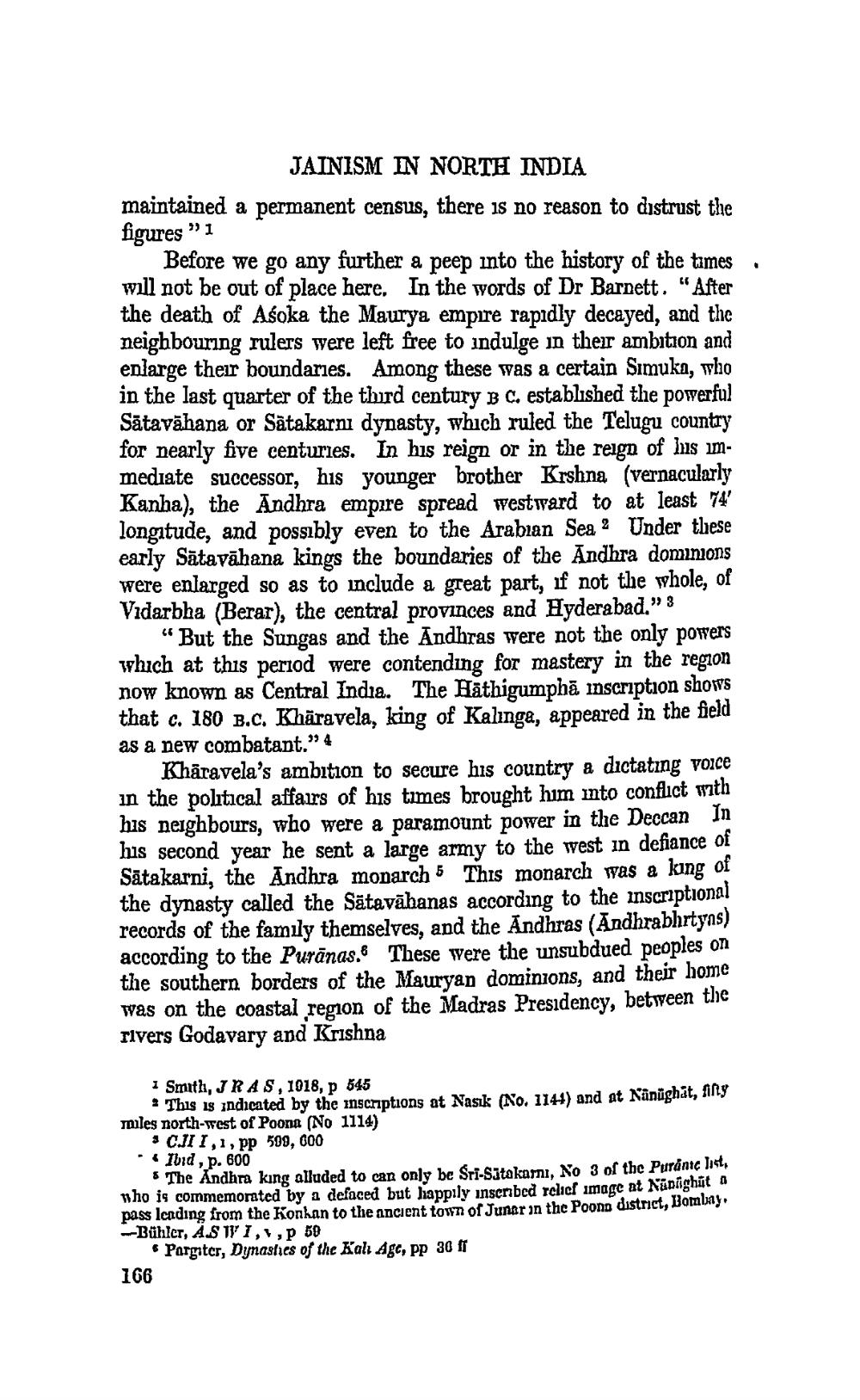________________ JAINISM IN NORTH INDIA maintained a permanent census, there is no reason to distrust the figures" 1 Before we go any further a peep into the history of the times. will not be out of place here. In the words of Dr Barnett. "After the death of Asoka the Maurya empire rapidly decayed, and the neighbouring rulers were left free to indulge in their ambition and enlarge their boundaries. Among these was a certain Simuka, who in the last quarter of the third century BC. established the powerful Satavahana or Satakarni dynasty, which ruled the Telugu country for nearly five centuries. In his reign or in the reign of his immediate successor, his younger brother Krshna (vernacularly Kanha), the Andhra empire spread westward to at least 74' longitude, and possibly even to the Arabian Sea 2 Under these early Satavahana kings the boundaries of the Andhra dominions were enlarged so as to include a great part, if not the whole, of Vidarbha (Berar), the central provinces and Hyderabad." 3 "But the Sungas and the Andhras were not the only powers which at this period were contending for mastery in the region now known as Central India. The Hathigumpha inscription shows that c. 180 B.c. Kharavela, king of Kalinga, appeared in the field as a new combatant." 4 Kharavela's ambition to secure his country a dictating voice in the political affairs of his times brought him into conflict with his neighbours, who were a paramount power in the Deccan In his second year he sent a large army to the west in defiance of Satakarni, the Andhra monarch 5 This monarch was a king of the dynasty called the Satavahanas according to the inscriptional records of the family themselves, and the Andhras (Andhrabhrtyns) according to the Puranas. These were the unsubdued peoples on the southern borders of the Mauryan dominions, and their home was on the coastal region of the Madras Presidency, between the Tivers Godavary and Krishna . Ibid, p. 600 1 Smith, JRAS, 1018, p 545 This is indicated by the inscriptions at Nasik (No. 1144) and at Nanughat, anty mles north-west of Poona (No 1114) *CJI I, 1, pp 500, 600 The Andhra king alluded to can only be Sri-Satakarni, No 3 of the Puranic list who is commemorated by a defaced but happily inscribed relic image at Nuplight pass lending from the Konhan to the ancient town of Junar in the Poono district, Bombay -Buhler, ASTF 1,, 59 . Pargiter, Dynashes of the Kali Age, PP 30 ff 166




